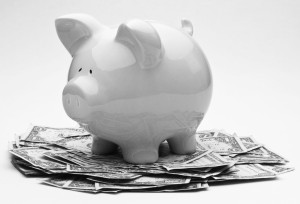 Money, money, money. Sometimes as a college student, there never seems to be enough of it. However, students can change that trend today and get on the path to financial success. This won’t happen overnight, but if students approach their finances with discipline and understanding, they will get there.
Money, money, money. Sometimes as a college student, there never seems to be enough of it. However, students can change that trend today and get on the path to financial success. This won’t happen overnight, but if students approach their finances with discipline and understanding, they will get there.
Here are some things to think about regarding the money in and out of your wallet.
Transportation. Most students drive to school, but consider carpooling with a classmate or friend and split the cost of gas. If you drive yourself, the best day to get gas is on Monday or Tuesday. Prices start to increase on Wednesday because the Department of Energy releases its weekly report; by the weekend, prices are even higher. Fill up early in the week and you could save around ten to twenty cents per gallon—that’s up to $200 per year.
If you are in the market for a car, do your research. Make a list of what you need in a vehicle, then do some research on the lowest rate of depreciation in case you want to resell, as well as the best fuel economy.
Make sure you also take into account the lowest cost to finance, insure, maintain and repair. KBB.com is a great place to start.
Food is one of the most costly things people as a society can buy. As a student, it’s easy to go grab something from the local drive-thru or convenience store, but just as chocolate is baked into chocolate chip cookies, convenience is baked into prices at these places.
According to DailyFinance.com, the average fast food meal costs $5 to $7 and over 800 calories each. You lose not only the money, but most nutritional value. On the flip side, the average meal prepared at home costs $1.50 to $3 and is exponentially healthier. Based on one meal per weekday, that adds up to a savings of over $1000 per year, conservatively.
With that money, you could buy the new wardrobe you may need from losing excess weight.
Coffee. This may as well run through our veins because as college students, we live on it; but it matters where you buy it. The average cup of a fancy coffee drink at Starbucks costs more than a gallon of gas, at $4. Based on a calculation of five days per week, you spend $1040 per year. With that, you could pay for a semester at Sinclair or a much-needed spring break trip.
Instead, buy a $15 to $30 coffee maker, filters and coffee from the store. You could save 90 percent this way.
Payday loans. Beware of these traps. If you’re strapped for cash, payday or auto title loans are there for you…but at a very high cost. According to the Federal Trade Commission, interest rates for these loans are in the triple digits. Yes, triple. Lack of budgeting ahead of time can cost you more than you ever imagined.
On that note, make sure you’re careful with credit cards. Credit cards have more regulations attached to them, but are dangerous to use on a whim. Interest rates average around 25 percent. On a $500 bill, that’s an extra $125 and more, if you don’t pay it off right away. Plus, they can easily build or destroy your credit.
Watching TV. Television can cost over $100 per month and take over 25 hours per week of your valuable time. If you’re like most students working and going to school, that’s time you don’t have. Instead, find cheaper and more productive ways to unwind. It’s important to do something you love, but it shouldn’t cost over $1200 per year and give you nothing in return.
Finally, track your spending. Instead of splurging whenever you feel like it, attach the purchase to a goal. For instance, if you are excited to buy a new purse or pair of sneakers, do it because you got an “A” on a test or because you didn’t procrastinate on homework. It will make the splurge more valuable.
All of these seem small, but positive daily decisions add up. After making healthy financial decisions, perhaps you could invest in a new car, the new clothes you want, or even pay off student loans! Happy saving!
Meggan Lanahan
Reporter
